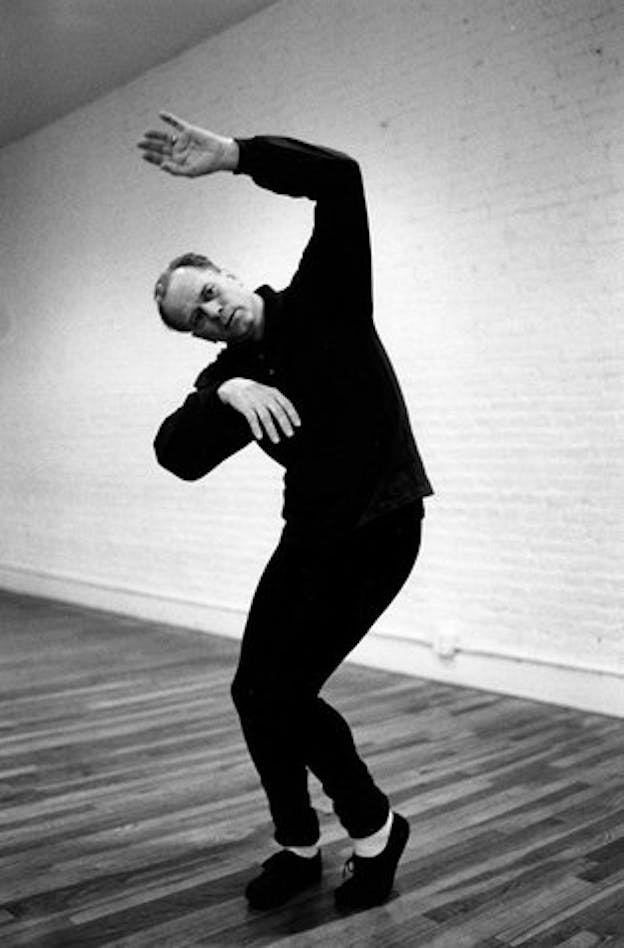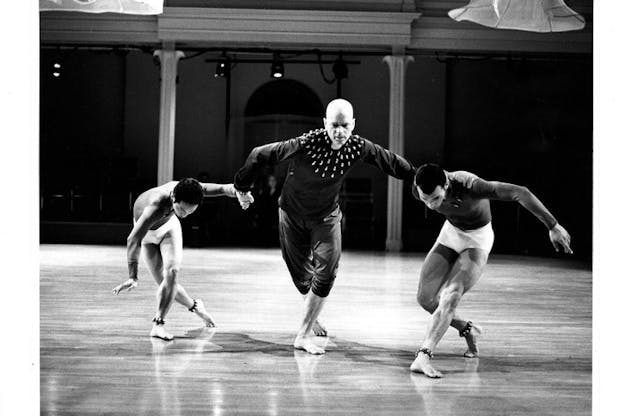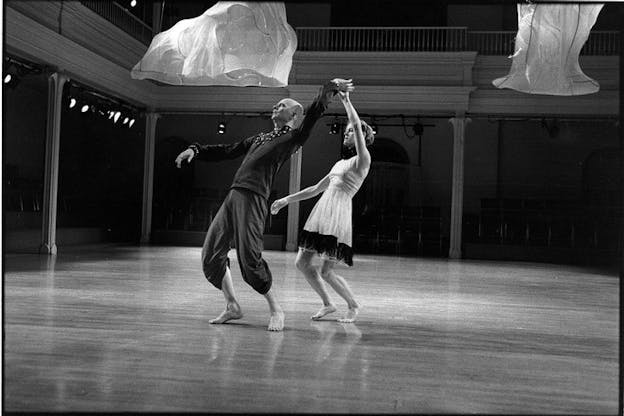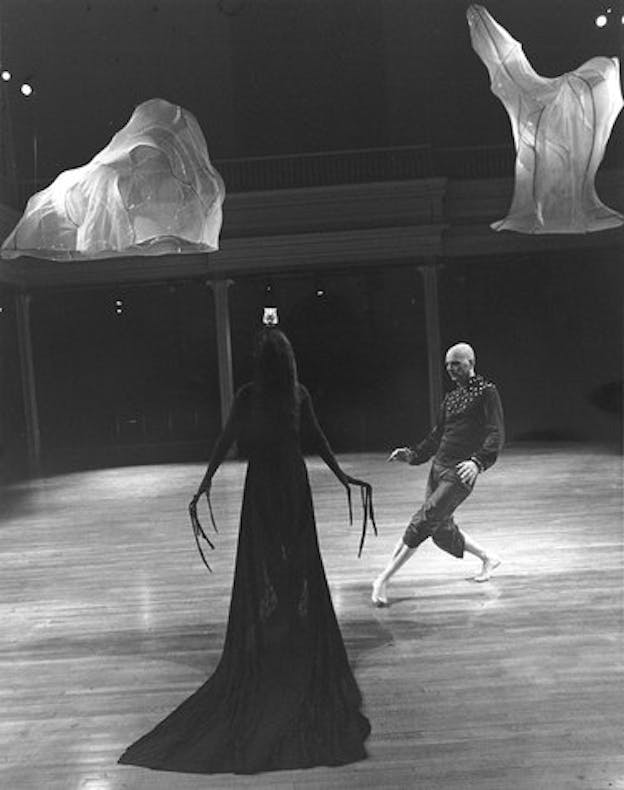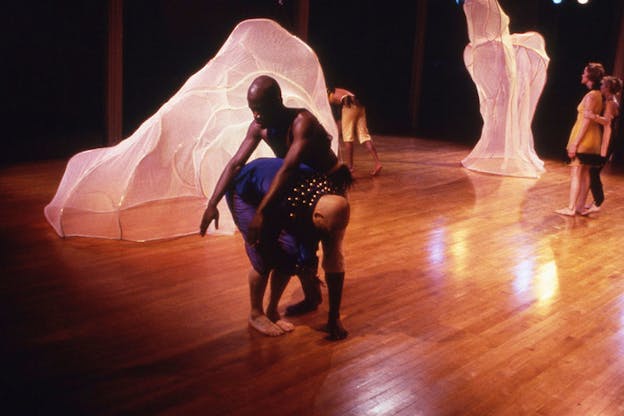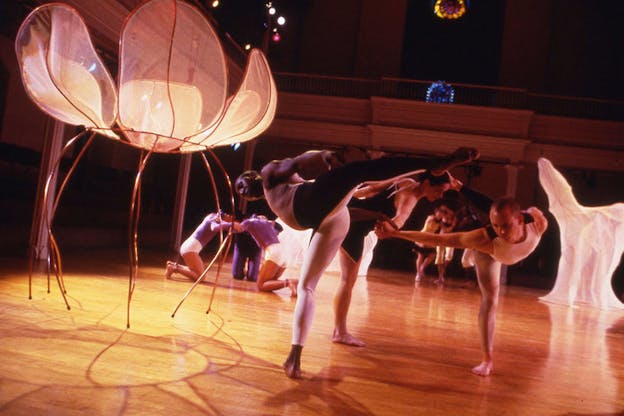Douglas Dunn

I felt the [Grants to Artists] award was an acknowledgment from my origins. There in the gift, encouraging me onward, were those in whose work I first beheld a vision of art and performance that gave me hope, courage, and inspiration… I received the award as a sign of congratulations from my mentors and returned to my steps charged, grateful to be part of a lineage of inspired nonconformity.
- Douglas Dunn, January 14, 1999
Artist Statement
Everything that enters through the five senses, and whatever stirs in his sixth, are influences that become part of the work in ways he doesn't analyze. All the same, he is aware of noticing some things more than others: the gaits of individuals and animals; architecture's effect on ambiance; the individuality of trees. Rhythm and texture are everywhere: grass blowing in the wind, a rock bouncing down a mountainside, a coil of cable on the floor backstage. As for dancers to whom he pays special attention, Merce Cunningham, Kenneth King, Steve Paxton, Jean Guizerix, Edward Villella, Rudolf Nureyev, James Truitt, Barbara Roan and Sally Silvers are prominent. The people who dance in his company, though he doesn't ask them to invent movement, bring out choreographic potentials he might not otherwise discover. Likewise, the artists and composers with whom he collaborates make the fish of his inner lake jump.
His goal in making dances is not to define an arena of taste, a style. Rather, it is to go from one constellation of intuitively understood embodiment to another; to step from one cluster, one unification of moves circumscribed by time and extent of consciousness, to another, under another sun. This progression is not a matter of progress; craft accrued from the experience of setting steps guarantees nothing, not even an easier start the next time. But the process of organizing it, deciding it's finished, performing it, then letting the dance recede into the past, his past, stimulates psychic turnover, the way close attention to the familiar alters perceptual habit, the way travelling to the relative exoticism of another culture refreshes and reformulates vision. Seeing is what he's after.
Our lit up days… from what position can we best appreciate the continuous miracle of their appearances… or are they another form of night, a darkness we are given to know that hides things from us? For him, the probing of perception and consciousness must include the full participation of an activated body. Placement of this figure, moving or still, in space, is of greater concern than its potential psychological meanings, so wonderfully elaborated in literature. As if decisions lovingly made about the shape, rhythm and tempo of trained bodies––call it concentrated, textural consideration of their heightened potential for organized elaboration, urged on and influenced no matter how much by an un-chosen, unrealizable desire to confront and to harmonize endlessly form-changing inner and outer demons––might stimulate aesthetic feeling in one who sees the result.
During the setting of a step, a way to diminish the importance of what he likes, and what others might like or dislike, is to conjure a procedure that forces an unforeseen outcome: he can't get away from himself, but he can try to dodge or outrun his vision-narrowing preferences. Sometimes a completed step or dance suggests, by associative similarity or difference, or by a strange, anti-associative triggering, the direction of a next step or dance: seeing a lake, one thinks of an ocean, then a mud flat, then a desert, then a spindle.
If he recognizes a step's meaning and finds it too frightening, he can always discard the move, or change it. Or stay with it to get past the fright. His project is to allow the reality he's a part of to take him over completely, so that he's inseparable from, thereby expressive of, the impersonal aspect of "his" nature. Then to consider whether what's revealed is worth showing to others.
- 2014
Biography
Douglas Dunn first presented dancing––One Thing Leads to Another, a collaboration with Sara Rudner––in Laura Dean's loft on Crosby Street in Manhattan in 1971. After a number of years of solo and duet work, Douglas Dunn & Dancers took shape. In 1978, Dunn saw the first of five invitations to the Autumn Festival in Paris. In 1980 the Autumn Festival and the Paris Opera Ballet commissioned Dunn to choreograph Stravinsky's Pulcinella, a forty-minute ballet for fifteen dancers. In addition to touring internationally, the company also presented annual seasons at The Joyce Theater, Dance Theater Workshop, The Kitchen, Danspace Project at St. Mark's Church, Performance Space 122, and Dance New Amsterdam. In 2009, under the auspices of the 92nd Street Y Harkness Dance Program, Douglas Dunn & Dancers danced at the Ailey Citicorp Theater in midtown, featuring a modern dance revival of Pulcinella. Over the last few years the company has hosted Salon Events at the Douglas Dunn Studio.
Dunn has been commissioned to create dances for the Groupe de Recherche Choreographique de l'Opera de Paris, the Grand Ballet of Bordeaux, New Dance Ensemble of Minneapolis, Repertory Dance Theater of Salt Lake City, the Ballet Théâtre Français de Nancy, the Walker Art Center, WGBH-TV, the Perth Institute of Contemporary Art, and Portland State University. Dunn's commissions for site-specific work include Second Mesa, (1982) at the Institute for Contemporary Art in Boston, Multiple Undo, (2006) at Lower Manhattan Cultural Council, Glass Sea (2006), at Dancing in the Streets, and Informations (2008), at the Ancram Opera House in Ancram, NY. Other outdoor dances include The Higgs field (2004), Vain Combat (2010), and The Snake (2010).
A graduate of Princeton University, Dunn took his first class at the Princeton Ballet Society and studied with Ted Shawn at Jacob's Pillow in 1963. Dunn began his career performing with the Merce Cunningham Dance Company and was a founding member of the groundbreaking improvisatory group Grand Union. Known for his artistic collaborations, Dunn has worked on film and video-dances with Charles Atlas and Rudy Burckhardt; with artists (Mimi Gross, David Ireland, Uli Gassmann, Jeffrey Schiff, Christian Jaccard); composers Joshua Fried, Bill Cole, Eliane Radigue, Alvin Lucier, Robert Ashley, Linda Fisher, John Driscoll, Ron Kuivila, Tali Roth, Marina Rosenfeld, Steve Lacy; poets Anne Waldman, Reed Bye; playwright Jim Neu, and lighting designer Carol Mullins.
Subsequent to receiving his FCPA grant, Dunn received an award from the Creative Arts Public Service Program, and a New York Dance and Performance "Bessie" Award for Sustained Achievement (1998). In 2008, Dunn was named Chevalier of the Order of Arts and Letters by the French Government. Dunn has been guest artist at major institutions across the United States and abroad and has received fellowships from the National Endowment for the Arts, the New York State Council on the Arts, the John Simon Guggenheim Memorial Foundation, the New York Foundation for the Arts, the Lila Wallace-Reader's Digest Fund.
